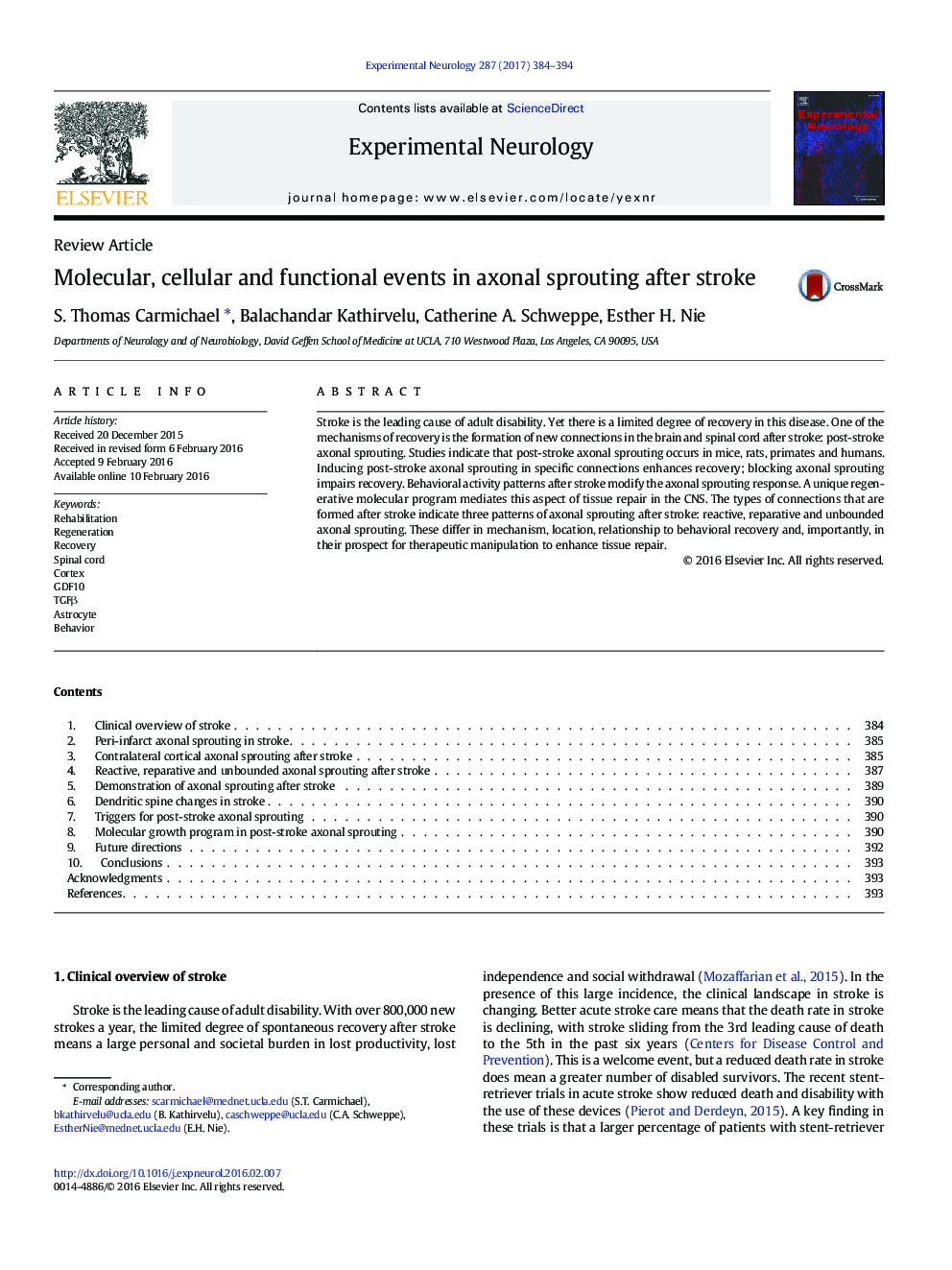| Article ID | Journal | Published Year | Pages | File Type |
|---|---|---|---|---|
| 5629182 | Experimental Neurology | 2017 | 11 Pages |
â¢Stroke induces the formation of new connections in brain and spinal cord.â¢These mediate some aspects of motor recovery.â¢A unique molecular program, a regenerative transcriptome, underlies post-stroke axonal sprouting.â¢Axonal sprouting occurs in three different patterns: reactive, reparative and unbounded.â¢Each pattern of post-stroke axonal sprouting has unique relationships to behavioral activity and molecular control points.
Stroke is the leading cause of adult disability. Yet there is a limited degree of recovery in this disease. One of the mechanisms of recovery is the formation of new connections in the brain and spinal cord after stroke: post-stroke axonal sprouting. Studies indicate that post-stroke axonal sprouting occurs in mice, rats, primates and humans. Inducing post-stroke axonal sprouting in specific connections enhances recovery; blocking axonal sprouting impairs recovery. Behavioral activity patterns after stroke modify the axonal sprouting response. A unique regenerative molecular program mediates this aspect of tissue repair in the CNS. The types of connections that are formed after stroke indicate three patterns of axonal sprouting after stroke: reactive, reparative and unbounded axonal sprouting. These differ in mechanism, location, relationship to behavioral recovery and, importantly, in their prospect for therapeutic manipulation to enhance tissue repair.
